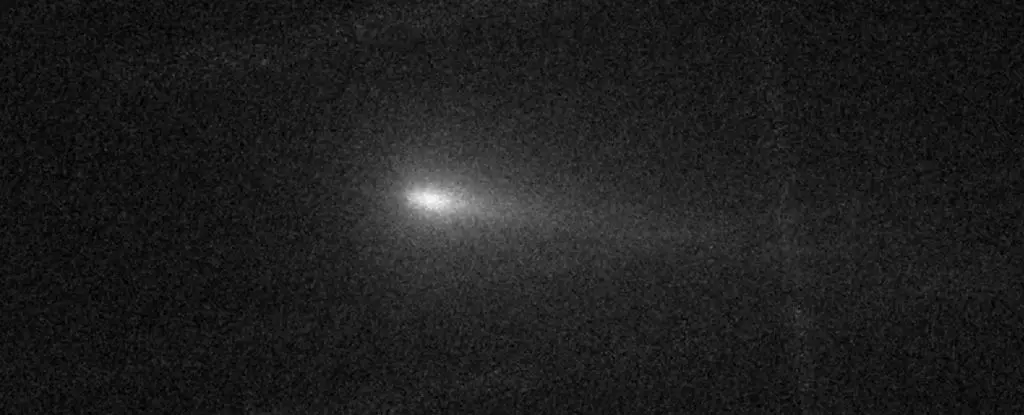In an unexpected twist of cosmic fate, the comet designated C/2024 S1, initially heralded as a potential Halloween spectacle for stargazers, is unraveling in the void of space. Discovered on September 27, this rare Kreutz sungrazer comet was set on an intriguing trajectory to pass perilously close to the Sun—at just 1.2 million kilometers (approximately 750,000 miles)—on October 28, 2024. However, as observations progressed through October, astronomers and enthusiasts are witnessing a spectacle of a different kind: the comet’s apparent disintegration as its nucleus fades like a phantom, leaving behind a shimmering tail of gas and dust.
The initial excitement surrounding C/2024 S1 was particularly palpable, with predictions suggesting it might outshine Venus and potentially grace our daytime skies. Yet, the reality of its behavior has brought a twinge of disappointment to avid skywatchers. The comet showed signs of instability, marked by at least one significant outburst—a phenomenon involving the sudden expulsion of gas and dust that temporarily brightens the comet before it returns to a quieter state.
Such behavior is not unprecedented within the world of comets, particularly those of the Kreutz family. As they approach the Sun—a fiery celestial body that subjects these icy visitors to intense gravitational and thermal stress—these comets often face their demise. C/2024 S1’s instability raises critical questions about the mechanics of disintegration. The primary suspect in these scenarios seems to be the rapid sublimation of volatile materials within the comet. As ice turns to gas, the release of pressure might accelerate the spin of the comet, exacerbating the centrifugal forces until the nucleus succumbs to fragmentation.
A compelling comparison can be drawn with Comet C/2019 Y4, whose dramatic disintegration was captured by the Hubble Space Telescope in 2020, providing a vivid illustration of this cosmic lifecycle. The destruction of C/2024 S1 may well echo this pattern, as the comet completes its ambitious trajectory toward perihelion.
Interestingly, C/2024 S1 is believed to be merely a remnant of a much larger cosmic entity. The Kreutz comets are thought to share a common ancestry, tracing back to the Great Comet of 1106 CE. This cataclysmic event splintered into multiple smaller comets, creating a lineage that includes notorious visitors such as Comet Ikeya-Seki, which illuminated the sky in 1965. Thus, the story of C/2024 S1 is also a narrative about continuity and transformation within the solar system—a testament to the enduring nature of cosmic remnants.
Even as the comet disintegrates, there remains a glimmer of hope for observers. Some fragments of the nucleus might endure the explosive process, continuing on their trajectory toward the Sun. While the potential for C/2024 S1 to reach the brightness once predicted seems increasingly unlikely, the spectacle of its tail—a long arc of gas and dust—might still provide viewers with a fleeting encounter.
For those in the Southern Hemisphere, C/2024 S1 may still be observable, especially with the aid of binoculars or small telescopes as it makes its approach to perihelion. Should the comet survive its closest passage to the Sun, there is a tantalizing prospect that it will shift into visibility for Northern Hemisphere observers post-perihelion. However, if fragmentation occurs during this pivotal moment, the iconic bright head of the comet may give way to a more subdued appearance—a curving tail with no distinct nucleus to accompany it.
While the disintegration of C/2024 S1 is a bittersweet chapter in the ongoing narrative of celestial events, it invites reflection on the transient yet awe-inspiring nature of comets. As we dive into this cosmic phenomenon, we are reminded of the delicate balance of forces in our solar system and the ever-changing marvels that grace our skies. Happy hunting; the universe still has wonders to unveil in the remnants of C/2024 S1.


Leave a Reply